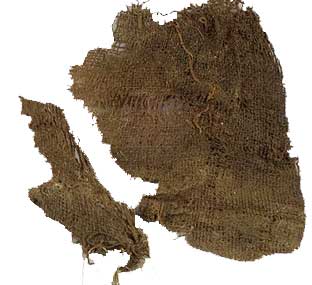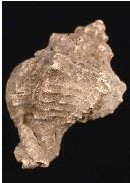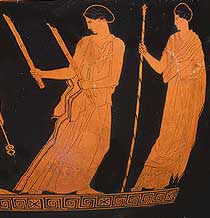HISTORY of LINEN
The exact date of the first handwoven linen works, however, continues to remain a mystery. Nevertheless, there is evidence of cloth being made in Mesopotamia and in Turkey as far back as 7000 to 8000 BC.
Egypt
Egypt was famous for her beautiful products of fine linens; at one time the chief and most profitable article of commerce. Reproductions of the drawings in the tombs of Beni-Hassan, show the processes,, from the sowing of the seed to the finished piece of cloth. ("The Ancient Egyptians," J. Gardner Wilkinson,' Chapter IX.) One of the most interesting instances of the use of linens is found in the wrappings of the mummies, large quantities being used in embalming men and animals; varying from the coarsest texture, like sail cloth, to the finest quality, which requires a microscope to discern the flax fibre. Fine examples are seen in the museums, which testify not only to the quality, but to the beautiful color designs woven in as borders. The mummy cloths vary from a few inches to one yard in width, and sometimes measure three hundred yards in length. These bandages also varied in fineness, according to the wealth of the deceased. White linen was used exclusively for garments of the priesthood and royal personages; the colored costumes, represented on the wall paint¬ings, show elaborate designs in embroidery. The common people wore gowns of indigo colored linen. Herodotus describes a corselet presented by Amasis, King of Egypt, to the Lacedaemonians: "It was of Linen, ornamented with numer¬ous figures of animals, worked in gold and cotton.

Linen dating 5000 BC
Each thread of the corselet was worthy of admiration; for though very fine, every one was composed of three hundred and sixty other threads, all distinct, the quality being similar to that dedicated to Minerva, at Lindus, by the same monarch." (Herodotus ii., 182, iii., 47.) Pliny describes Egyptian fish-nets — "Some of them were so delicate that they would pass through a man's ring, and a single person could carry a sufficient number of them to surround a whole wood. Julius Lupus, who died while Governor of Egypt, had some of these nets, each string consisting of one hundred and fifty threads." Portions of this kind of net have been discovered at Thebes. (Pliny xix., i.) The sail cloths made in Egypt were prized by the Tyrians; they were frequently adorned with painted or embroidered devices. "The ship in which Anthony and Cleopatra went to the battle of Actium was distinguished from the rest of the fleet by its purple sails, which were the peculiar privilege of the admiral's fleet. The sails of the large ship of Ptolemy Philopator, mentioned by Atticus, were also of fine linen, ornamented with a purple border."
More About Ancient Egyptian Linen
PALESTINE
Textiles from the Chalcolithic Period, 4th millennium BCE, were discovered in the Judean Desert in sites such as the Cave of the Treasure and the Cave of the Warrior. ( American Museum of Natural History)

Warrior's Cave Linen
The Bible, gives the earliest written records of the use of linen. The first mention of linen is in Genesis, at the time Pharaoh exalted Joseph to a high position in the kingdom. He "arrayed him in vestures of fine linen" (Genesis xli., 42) —a great dis¬tinction, permitted only to members of royal families, priests, or people holding official posi¬tions. Linen was used for the curtains of the Tabernacle (Exodus xxvi., 31), the priests' bonnets, their garments (Exodus xxviii., 42), vestments, lampwicks; and the "women that were wise-hearted did spin with their hands, and brought that which they had spun, both of blue and of purple, and of scarlet, and of fine linen," as an offering to the Lord. (Exodus xxxvi., 8.) Little "Samuel ministered before the Lord, being a child, girded with a linen ephod." (I. Samuel ii., 18.) "And Solomon had horses brought out of Egypt and linen yarns; the king's merchants received the linen yarn at a price." (I. Kings x., 28.) Flax is mentioned at the time of the plagues — the plague of hail — "the flax and the barley were smitten, for the barley was in the ear, and the flax boiled." (Exodus ix., 31.) The spies sent out by Joshua to view the land of Jericho, were hid by Rahab: "She had brought them up to the roof of her house, and hid them with the stalks of flax, which she had laid in order upon the roof of her house." (Joshua ii., 6.) It is said of Samson, when bound with new cords to be delivered to the Philistines, "the cords that were upon his arms became as flax that was burnt with fire." (Judges xv., 14.) In Proverbs, the virtuous woman "seeketh wool and flax, and worketh willingly with her hands." (Proverbs xxxi., 13.) In other references, linen is used as a symbol of purity on earth, and of glory in heaven; it has also been used as a symbol of firmness, because difficult to tear; of incorruption, and of clearest splendor — be¬cause whiter when cleansed.
PHOENICIA
The maritime relations of Phoenicia with all countries along the Mediterranean Sea made her towns, Tyre and Sidon, of great commercial importance; to such an extent that her traders were called "merchant princes." The Phoenicians, for many years, imported Egyptian linens for clothing and sail cloths; but they were especially noted for the crimson colored linens, called purple. "When the beautiful purple of Tyre was first discovered the sovereign to whom it was presented appropriated it as a royal distinction, hence to assume the purple became significant with being chosen king. Homer mentions that purple was only worn by princes." The purple dye was obtained from two shell-fish ( Murex brandaris), from a sack in the back of the neck, which held a white garlic-like fluid that was extracted while the fish was alive. When the material was dipped in this extract and exposed to the light, it turned first green, then blue, then red, and finally a deep purple; after washing in soap it became a permanent crimson color, called royal purple.

The first written records of purple dyeing, from Nuzi, Mesopotamia, are about 3500 years old. Archaeological evidence of purple date dates from 1700 BCE.
An interesting myth describes the manner of the discovery of the dye. Heracles, an ancient god, started with his dog for a walk along the shore, to visit a beautiful maiden, Tyros. While walking, quite absorbed in the anticipations of meeting his lady love, he forgot his dog, who not having food of love for consolation, appeased his appetite by eating a shell-fish, sunning on a stone. When Heracles' visit with Tyros was nearly ended, and he asked the privilege of returning, Tyros suddenly discovered that the dog's mouth was a beautiful purple color, hitherto unknown. With a spirit of possession, she replied to her lover that she would not see him again until he could bring her a robe of the same beautiful color as the mouth of the dog. Heracles, although not noted for an in¬ventive mind, after considerable research discovered the fish and was again reinstated in the favor of Tyros.
Daniel C. Snell, Life in the Ancient Near East (Yale University Press, 1997).
GREECE
Linen was one of the chief imports of Greece from Egypt and Phoenicia. To Pliny and Pausanias we are indebted for the knowledge that flax was grown in Greece in ancient times. Doubtless the same spirit which produced the classic art and literature of Greece — that of original and artistic perfection—produced the costly materials of exquisite workmanship, often mentioned in classic literature. The charming style of linen garments, worn by Grecian women, were frequently depicted on the monu¬ments; these sculptured pictures portray ample folds, and flowing garments, which added grace of line and dignity to the figure Homer describes not only the exquisite texture of the linen materials, but suggests that the art of weaving, the greatest of household accom-plishments, is a fit task for the goddesses. "Now Iris went with a message to White-armed Helen, in the likeness of her husband's sister — and in the hall she found Helen weaving a great purple web of double fold, and embroidering thereon many battles of horse-taming Trojans and mail-clad Achaians, that had endured for her sake, at the hands of Ares." (Iliad, Book III., 1. 122.) "Forthwith she veiled her face in shining linen." In the battle of Tydides and Aphrodite, he wounds her "straight through the ambrosial raiment that the Graces them¬selves had woven her." (Iliad, Book V., 11. 315-347.) "And Athena, daughter of sgis-bearing Zeus, cast down at her father's threshold her woven vesture many colored, that herself had wrought and her hands had fashioned." (Iliad, Book V., II. 733-736.) "And Patrocles bade his fellows and handmaidens spread with all speed a thick couch for Phoenix; and they obeyed and spread a couch as he ordained, fleeces and rugs and fine flock of linen." (Iliad, Book IX., I. 660.) Carpets of purple cover the divans at the reception of Odysseus by Achilles. (Iliad, Book IX., 1. 200.)

The Grecian women were the first, it is claimed, to use a small square of linen for a pocket handkerchief; for'which Aristophanes said, "the old men per-ferred a fox's tail." There is hardly a book in the Iliad which does not refer to linen and the noble art of weaving; and the proverbial web of Penelope, in the Odyssey, gives added honor to her charms of wit and grace. But this a work she made So hugely long, undoing still in night By torches, all she did by day's broad light. Because wise Pallas hath given wills to it So full of art, and made her understand All works in fair skill of a lady's hand. But (for her working mind) we read of none Of all the old world, in which Greece hath shown Her rarest pieces, that could equal her; Tyro, Alcmena, and Mycena, were To hold comparison in no degree, For solid brain, with wise Penelope. — Chapman, Odyssey, Book II., 1. 137. In early times, the Island of Delos was the emporium for linen products; she sent exports of linen to all ports on the Mediterranean Sea; until the war of Mithridates closed her commercial interests. Alexander the Great is said to have bound up the wounds of Lysimachus, after battle, with his turban; the king's turbans were of linen ornamented with gold and precious stones, worn like diadems.

ROME
Rome owed her knowledge of linen and the textile arts to Greece; the wealth and luxury of the Roman citizen encouraged products from the loom of the finest textures, often embellished with gold and silver embroidery. Rome im¬ported from her colonies fine linens, and the emperors established colleges or corporations for its manufacture, which supplied the court and officers of the army; thus the industry was carried wherever the Roman legion penetrated — Spain, Gaul, and the shores of England.. The citizen's robes and mantles were often very costly. Plutarch relates that Cato, on receiving one of these robes by inheritance, com¬manded it to be immediately sold, because he considered it too costly for a conscientious Roman to wear — showing his enmity to luxury. Nero's dining-rooms were hung with Baby¬lonian cloth, mentioned by Pliny, "worth about sixty thousand dollars." Gold and silver were probably combined with the linen, which increased the value of the tapestries. Pliny also relates with contempt that the Roman ladies "cannot desire to go more rich and costly in their apparel than to wear linen." He de¬scribes their weaving establishments, which were placed underground to obtain more moisture and facilitate the spinning of very fine thread. Linen was employed not only for articles of dress, especially worn by women, but also for bedding, table covers, napkins, hand towels, and bath towels. With the downfall of the Roman power, several centuries, known as the dark ages, followed, when each tribe or family made only enough for home consumption. The great com¬mercial interests lay dormant, until the re¬awakening of the tenth century, when markets for all the textiles were again established.
Switzerland
Prehistoric weaving of the stone age were found in the region of the Swiss Lake Dwellers around lake Robenhausen in Switzerland, a culture dating back to about 5000 B.C.E. Here archeologists discovered woven linen scraps and spinning whorls, an indication that this culture had advanced knowledge of the subject. ( Living on the lake in prehistoric Europe, Francesco Menotti)
Sources: the Stoty of Textile Arts by Edith Very, 1912
Linen Trade, Ancient and Modern, Alex. J. Warden, 1864
© 2015 - Belovedlinens Terms of Use Privacy Policy Contact Us
